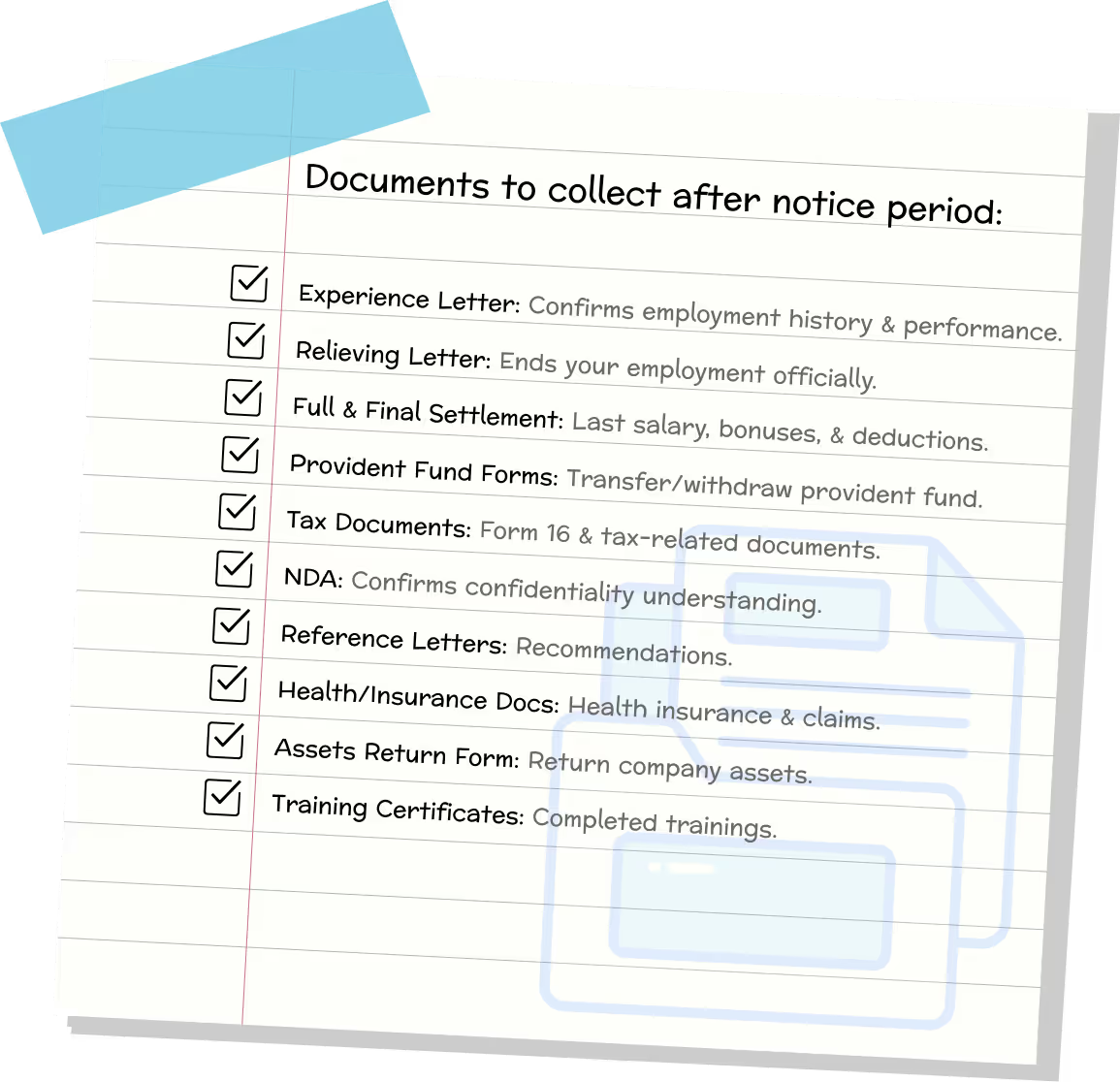What is Notice Period?
Notice period in job is the time between the date of resignation and the last day of employment of an employee who resigns from a company. The employer must provide him/her with this time period before an employee's employment ends. In other words, a notice period is the amount of time an employee must give between the time he/she decides to leave and the time he/she actually leaves.
What are the types of Notice Periods?
As we answer the question of what is notice period, let's take a look at the types of notice period.
1) Statutory notice periods
This is the legal minimum amount of notice that you need to offer, you can offer more, but you can never offer less.
2) Contractual notice periods
The notice periods as set out in the employee's contract of employment.
3) Probationary notice periods
The length of an employee's notice period will usually be much shorter when an employee is still in their probation period.
4) Gross misconduct
If you believe an employee is guilty of gross misconduct, then you are entitled to dismiss them without notice.
5) Payment in lieu of notice
This means that you pay them the gross wages owed to them over the course of their notice period, but don't expect them to come into work.
.avif)
What is a usual notice period in job?
There is no universal rule for when and how long you should give a notice period. Many roles have a two-week notice period, while high-level leadership and highly technical occupations require a lengthier notice period to allow the organisation to reorganise their critical functions.
Note: When you sign an employment contract upon onboarding, many companies clarify their notice expectations. Consider how your notice will affect your remaining time at work and how long it will take you to transfer your tasks to coworkers or a new recruit when considering how much notice to give. Be mindful of the company's operations while still putting your career needs first. If you have another job lined up in a month and are on excellent terms with your current employer, you might want to consider providing a lengthier notice period to make the transfer easier.
How can Notice Period be implemented?
1. Employment contract
The work agreement ought to clarify the notice period strategy in straightforward language. A direct archive that transfers the worker and boss commitments considers the two sides responsible for their lead.
2. Incentives
Organizations can consider giving severance pay or an optional reward to inspire representatives to inform their boss ahead of time. HR and lawful experts ought to dissect the neighbourhood government severance pay laws to guarantee arrangement with the motivating force plan.
3. Performance reviews
Reporting unsuitable representative lead in execution audits empowers supervisors to keep a consciousness of negative worker standards of conduct. Tending to an issue before it heightens permits representatives to improve their comportment and limit the odds of an abrupt renunciation or excusal.
4. Encourage goodwill
HRs should execute a sympathetic methodology when planning to pull out. Showing behavior while advising a representative of excusal can prompt a kinder withdrawal measure among boss and worker.
Why is Notice period important ?
As we learnt what is notice period, we need to understand that along with establishing a timeline for the employee termination process, it helps enable each side a smoother transition to the next stage. It is important to adhere to the notice period rules as it reflects mutual respect towards the opposite party, a rudimentary component of a healthy employment relationship and a necessity for robust company culture.
What are the tasks an employee works on during the notice period?
During the notice period, employees typically focus on several key tasks:
- Knowledge transfer: Documenting ongoing projects and processes to ensure a smooth handover to remaining team members or their replacement.
- Completing outstanding work: Finishing up pending tasks and projects to avoid any disruptions.
- Training successors: Providing training and support to coworkers or new hires who will take over their responsibilities.
- Updating documentation: Ensuring all relevant documentation is up-to-date and accessible for the team.
What documents does an employee need from the company when they are leaving a corporate job?
When leaving a corporate job, an employee should obtain the following documents from the company:

- Experience letter: A formal letter detailing the duration of employment and the position held.
- Relieving letter: A document confirming the employee's resignation and the last working day.
- Salary slips: Copies of the last few months' salary slips for reference.
- Provident Fund (PF) details: Information regarding the employee's provident fund account and transfer or withdrawal procedures.
- Tax documents: Form 16 and other relevant tax documents for filing income tax returns.
FAQs
Q.1 Can I take leave during the notice period?
Yes, you can, but it generally requires approval from your employer. The details should be checked in your employment contract or company policy.
Q.2 Is it necessary to serve the notice period?
Yes, it's usually necessary as per your employment contract. Not serving it can lead to penalties or loss of benefits.
Q.3 Can the company hold salary during the notice period?
No, the company cannot hold your salary during the notice period unless specified in your contract. You are entitled to be paid for the work you do during this time.
Q.4 What is the maximum notice period for leaving a job?
The maximum notice period varies by company and role, but it typically ranges from one month to three months. The specific duration should be stated in your employment contract.














































.avif)